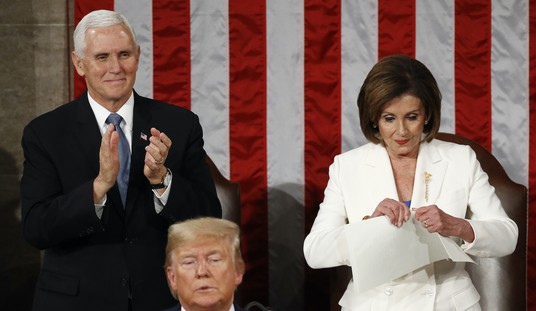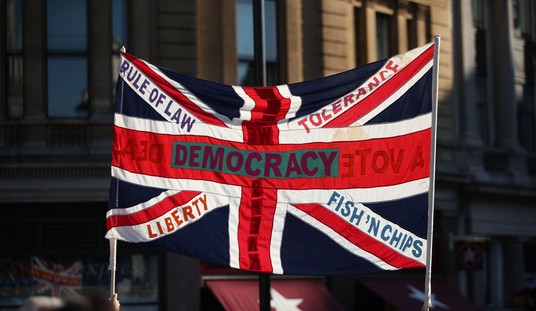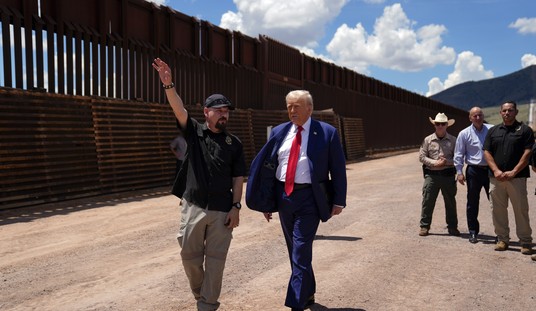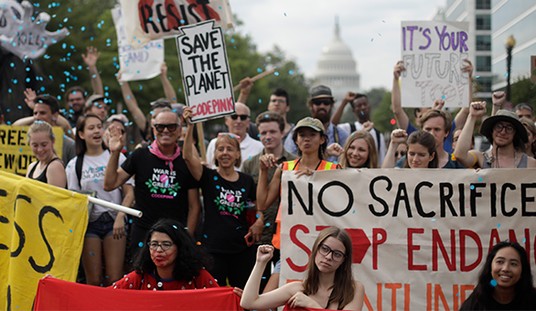Voters in the November election will be acutely aware of two key economic variables above all others: the national unemployment rate, and the price they pay for a gallon of gasoline. President Obama senses his vulnerability on gasoline prices, and is busy erecting a defense against charges that his actions (or inactions) have contributed to high prices.
His weekly radio address focused on the problem of rising gasoline prices and energy policy in general:
Ending this cycle of rising gas prices won’t be easy, and it won’t happen overnight. But that’s why you sent us to Washington – to solve tough problems like this one. So I’m going to keep doing everything I can to help you save money on gas, both right now and in the future.
Earlier this week, Obama said that gasoline prices are rising in part because of international bottlenecks and supply disruptions that affect the crude oil market.
Obama cites bottlenecks, speculation as possible gasoline price factors
US President Barack Obama said his administration is looking at whether it would be possible to ease both international and US supply bottlenecks as an immediate response to rising gasoline prices. … “We’re concerned about what’s happening in terms of production around the world. It’s not just what’s happening in the [Persian] Gulf. You’ve had, for example, in Sudan, some oil that’s been taken offline that’s helping to restrict supply.”
In its Mar. 6 Short-Term Energy Outlook (STEO), the US Energy Information Administration said several notable production disruptions outside the Organization of Petroleum Exporting Countries began or intensified during the last 2 months, leaving an average 1 million b/d [barrels per day] offline in February. [Emphasis added.]
Those production disruptions include a year-on-year loss of 230,000 b/d in the Sudan, 80,000 b/d in Yemen, and 140,000 b/d in Syria. That’s 470,000 b/d total shortfall from just those three hotspots.
I agree with this analysis, which acknowledges the supply/demand dynamics of the crude oil market. I have often maintained that crude oil is a world market that is balanced on a thin margin of “overhang”: global markets operate best if production capability exceeds demand by 1 to 2 million barrels per day. Anything that erodes that overhang (supply disruptions, increasing demand) can send crude oil rapidly higher.
Bottom line: gasoline prices are closely correlated to the crude oil price, and crude oil disruptions in half-million barrel per day “chunks” are significant to the crude oil price on a global scale. President Obama’s Sudan/Yemen/Syria excuse acknowledges as much.
But the President seems to forget supply and demand when it comes to domestic energy policy.From the weekly radio address:
As usual, politicians have been rolling out their three-point plans for two-dollar gas: drill, drill, and drill some more. Well, my response is, we have been drilling. Under my Administration, oil production in America is at an eight-year high. We’ve quadrupled the number of operating oil rigs, and opened up millions of acres for drilling. But you and I both know that with only 2% of the world’s oil reserves, we can’t just drill our way to lower gas prices – not when consume 20 percent of the world’s oil.
“We’ve” been successful finding new sources of oil on private lands, under state jurisdiction (primarily North Dakota, Texas and Oklahoma), driven by market incentives. Federal action deserves little or none of the credit.
But oddly, Obama’s position is “Drilling is up, production is up, but gas prices are still high!”, implicitly contradicting the supply/demand dynamic. One can only imagine how high gasoline prices would be without the recent supply surge.
There’s a reason President Obama must discount the positive effect of increased domestic supply: his policies have been hostile to it as a strategy.
The graph below depicts crude oil production from the U.S. Gulf of Mexico during President Obama’s term in office. Daily production of oil has dropped from a third of domestic supply to less than a quarter since the BP spill.

As for 2012, the EIA’s Annual Energy Outlook for 2010 (AEO2010), published in December 2009, forecast GoM crude oil production to average 1.76 million b/d. The latest estimate is 1.26 million b/d. (For those keeping score, that’s a loss of 500,000 b/d, using the government’s numbers, not mine.) The Department of the Interior’s reaction to the Macondo blowout was a drilling moratorium and permitting slowdown which led to the exodus of 11 deepwater drilling rigs from the Gulf.
In my humble opinion, the Federal reaction to the BP spill was mostly overreaction. The most significant step in insuring industry’s capability to contain and control a future deepwater blowout event was a private initiative.
As for bottlenecks, none is perhaps more significant than the bottleneck that is currently keeping midcontinent oil, pegged to the West Texas Intermediate crude oil benchmark, trading at a discount to the world price. That bottleneck could be alleviated by the Keystone XL pipeline, among other projects. Keystone XL could deliver 700,000 b/d to Gulf Coast (and hence, international) markets.
With respect to domestic supply, Keystone XL is especially important to North Dakota operators. An improved oil marketing outlook for the region could spur an even greater pace of drilling in North Dakota’s Bakken formation, which is largely responsible for the current domestic supply surge.
An enhanced domestic supply of petroleum, along with efficient, modern infrastructure, are key elements of our nation’s energy security. The President is correct in his assertion that tight crude oil supplies lead to escalating gasoline prices. But domestically, his policy initiatives seem designed to discourage drilling and to erect stumbling blocks for producers.
I’m going to keep doing everything I can to help you save money on gas, both right now and in the future.
I just don’t buy it. His lips keep moving, but there’s a big disconnect between President Obama’s campaign rhetoric and his policies.
Cross-posted at stevemaley.com.












Join the conversation as a VIP Member